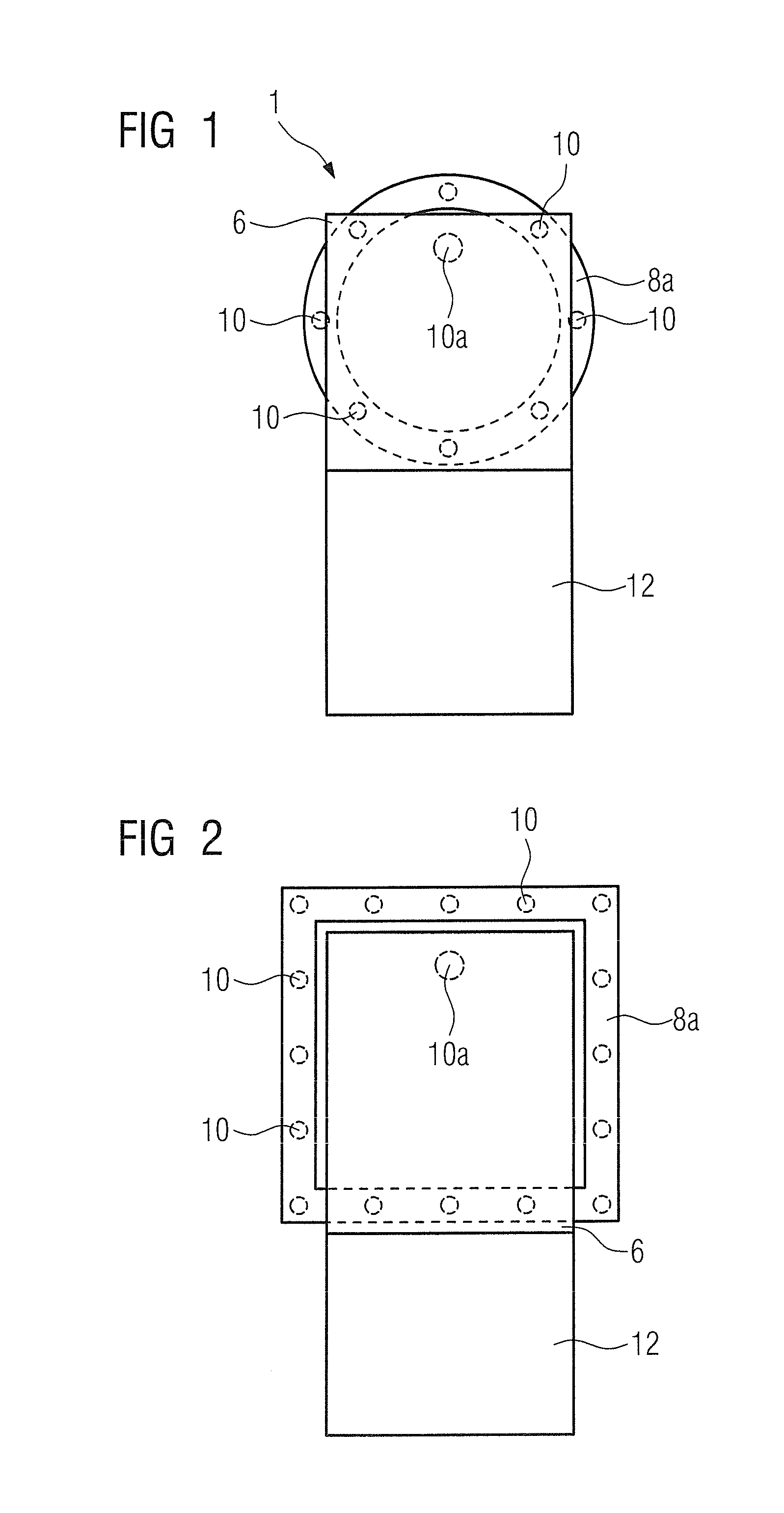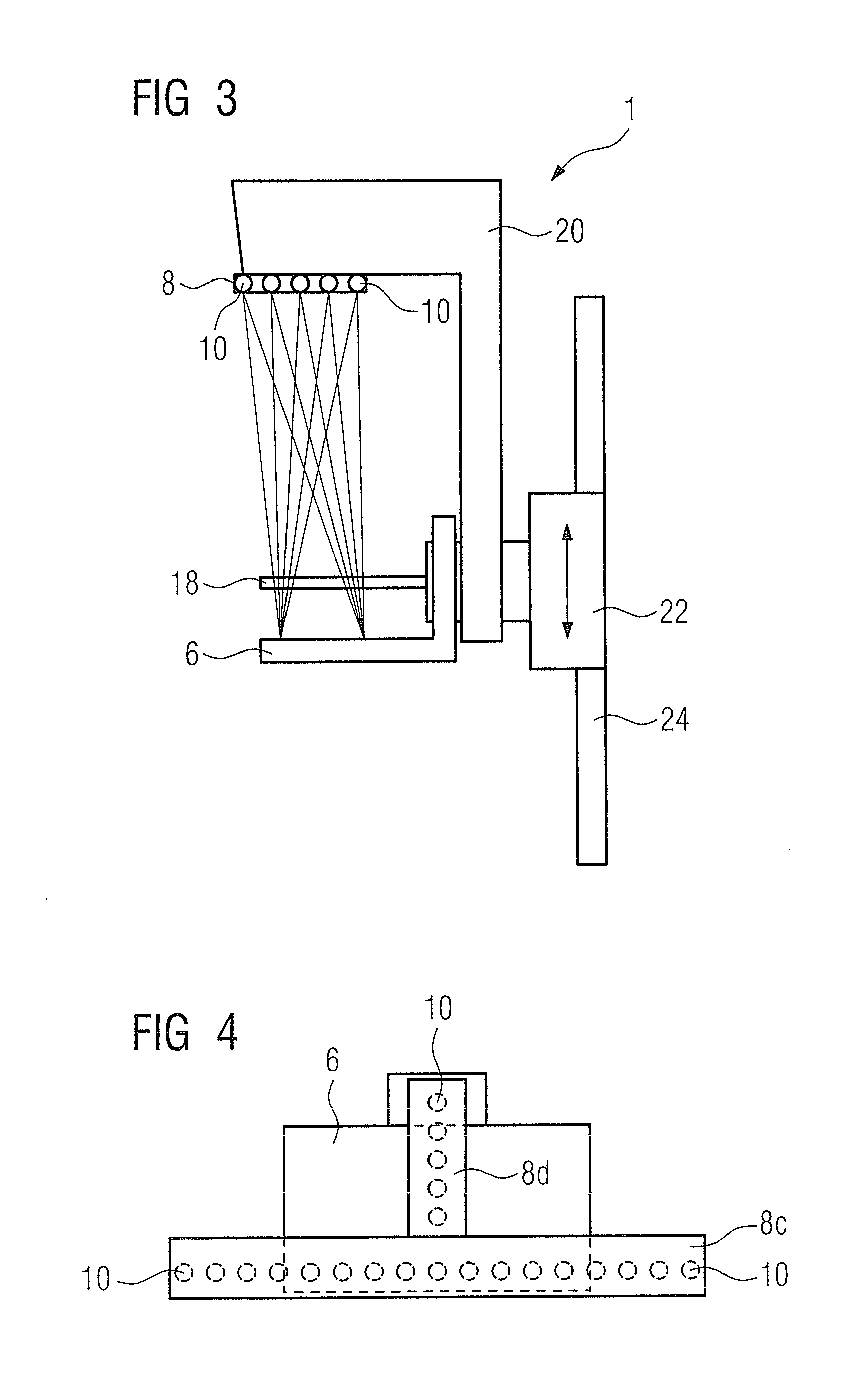Mammography apparatus with X-ray sources arranged at different distances from the chest
a technology of x-ray sources and mammography, which is applied in the direction of instruments, patient positioning for diagnostics, applications, etc., can solve the problems of affecting the evaluation of three-dimensional mammography images, affecting the accuracy of mammography, and reducing the depth resolution of the image, so as to achieve the effect of higher depth resolution
- Summary
- Abstract
- Description
- Claims
- Application Information
AI Technical Summary
Benefits of technology
Problems solved by technology
Method used
Image
Examples
fourth embodiment
[0049]The fourth embodiment thus has three scan trajectories. The first scan trajectory runs parallel to the shoulder-to-shoulder axis of a patient. The second and third scan trajectory respectively runs orthogonal to the shoulder-to-shoulder axis of the patient. The right multifocus x-ray tube 8e and the left multifocus x-ray tube 8f can be arranged so as to be movable, such that they can be shifted into a position in which optimal acquisition conditions are to be expected. The x-ray beams strike the detector 6 after they have passed through the tissue.
fifth embodiment
[0050]FIG. 6 shows the invention in which a multifocus matrix x-ray tube 8g is provided. The positions 10 emitting an x-ray beam are arranged in a matrix on the multifocus matrix x-ray tube. A number of scan trajectories are thereby possible that run parallel to the shoulder-to-shoulder axis of a patient. A number of scan trajectories are also possible that run orthogonal to the shoulder-to-shoulder axis of a patient. Moreover, scan trajectories are possible that run at an angle to the shoulder-to-shoulder axis of the patient. The x-ray beams strike the detector 6 after they have passed through the tissue.
[0051]FIG. 7 shows a side view of a position 10 emitting an x-ray beam, the position 10 being located in the second multifocus x-ray tube 8d, the third multifocus x-ray tube 8e, the fourth multifocus x-ray tube 8f or in the multifocus matrix x-ray tube 8g at a position that is further removed from the shoulder-to-shoulder axis of the patient than another position emitting an x-ray ...
PUM
 Login to View More
Login to View More Abstract
Description
Claims
Application Information
 Login to View More
Login to View More - R&D
- Intellectual Property
- Life Sciences
- Materials
- Tech Scout
- Unparalleled Data Quality
- Higher Quality Content
- 60% Fewer Hallucinations
Browse by: Latest US Patents, China's latest patents, Technical Efficacy Thesaurus, Application Domain, Technology Topic, Popular Technical Reports.
© 2025 PatSnap. All rights reserved.Legal|Privacy policy|Modern Slavery Act Transparency Statement|Sitemap|About US| Contact US: help@patsnap.com



